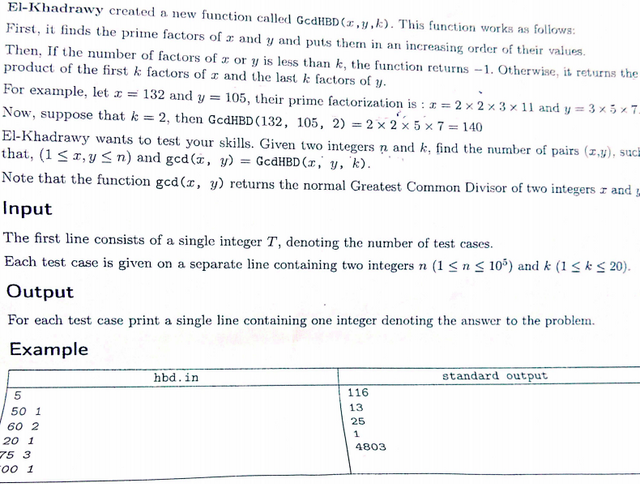Hello everyone, can anyone tell me how to solve this problem (or how to solve this kind of problems) ? 
remove repeated lines
→ Pay attention
→ Top rated
| # | User | Rating |
|---|---|---|
| 1 | tourist | 3856 |
| 2 | jiangly | 3747 |
| 3 | orzdevinwang | 3706 |
| 4 | jqdai0815 | 3682 |
| 5 | ksun48 | 3591 |
| 6 | gamegame | 3477 |
| 7 | Benq | 3468 |
| 8 | Radewoosh | 3462 |
| 9 | ecnerwala | 3451 |
| 10 | heuristica | 3431 |
→ Top contributors
| # | User | Contrib. |
|---|---|---|
| 1 | cry | 167 |
| 2 | -is-this-fft- | 162 |
| 3 | Dominater069 | 160 |
| 4 | Um_nik | 158 |
| 5 | atcoder_official | 157 |
| 6 | Qingyu | 156 |
| 7 | adamant | 151 |
| 7 | djm03178 | 151 |
| 7 | luogu_official | 151 |
| 10 | awoo | 146 |
→ Find user
→ Recent actions
↑
↓
Codeforces (c) Copyright 2010-2025 Mike Mirzayanov
The only programming contests Web 2.0 platform
Server time: Feb/24/2025 04:36:34 (j2).
Desktop version, switch to mobile version.
Supported by
User lists


| Name |
|---|










$$$gcd(x,y)$$$ equals to the multiplication of all the common factors between $$$x$$$ and $$$y$$$.
$$$gcdHBD(x,y)$$$ equals to the multiplication of the first $$$k$$$ factors of $$$x$$$ and the last $$$k$$$ factors of $$$y$$$ .
so $$$gcd(x,y)$$$ = $$$gcdHBD(x,y)$$$ iff the first $$$k$$$ factors of $$$x$$$ are common factors in $$$y$$$ and the last $$$k$$$ factors of $$$y$$$ are common in $$$x$$$.
so $$$x$$$ and $$$y$$$ should have at least $$$2k$$$ factors.
now let's get the maximum value of $$$k$$$ in the worst case: $$$gcd(x,y)$$$ <= $$$n$$$ and $$$n<=10^5$$$ in the worst case all the factors will be equals to $$$2$$$. so $$$k$$$ <= $$$log2(10^5)/2$$$ , $$$k$$$ <= $$$8$$$.
so if $$$k$$$ > $$$8$$$ the answer is $$$0$$$.
so what to do if $$$k$$$ <= $$$8$$$ ?
for each integer $$$x$$$ $$$[1,n]$$$
1- get it's factors.
2- remove the first $$$k$$$ factors from it ( that are common in $$$x$$$ and $$$y$$$ )
3- backtrack in these remaning factors to get the last $$$k$$$ factors ( that are common in $$$x$$$ and $$$y$$$ ).
4- make another backtrack to get another factors that are not in $$$x$$$ so can't affect the $$$gcd$$$ ( on primes from $$$2$$$ to $$$r$$$ where $$$r$$$ is the lowest factor in $$$y$$$ )
code : https://ideone.com/61h70N
Amazing solution, I worked on another approach which seems like it's more optimizable somehow. It works as follows:
"bad" factors ensures that besides $$$g$$$, there are no extra common factors between $$$x$$$, and $$$y$$$.
Intuitively, it seems the third backtracking does a lot of repeated work for many $$$x$$$, so this is where I see the improvement.
I haven't been able to prove the complexity, but it passes my trivial stress test.
https://ideone.com/4lgcAd
I think we have the same approach with different implementation way